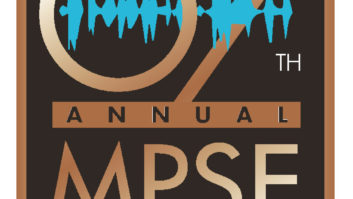
As a supervising sound editor whose projects include The 9th Life of Louis Drax, the HBO hit All the Way, Maps to the Stars, The Campaign, Bruno and Pineapple Express, Michael O’Farrell likes being a hired gun. As such, he enjoys the independence, the variety and the control.
That said, control is enhanced by his choice of tools. O’Farrell is adventurous, to be sure. He likes to try new systems, and while many resisted digital workflow way back, he embraced it. He was the person who faced opposition in bringing Pro Tools to Sony.
But when years later he began to find his system somewhat limiting, finding it harder and harder to have smaller interfaces to drag around, a system of outstanding quality to accommodate his traveling, he searched for something new. In 2007 O’Farrell began to use Steinberg Nuendo on the Will Smith film Pursuit of Happyness.
Although it was not without its learning curve, simply put, it’s expanded his capabilities, it’s flexible and it’s portable.
Sitting in front of Hollywood Sound’s Yamaha Nuage board, which houses Nuendo, O’Farrell spoke about how easy the console is to take apart, pack up and take all over the world where he is called to do his work. (He has the setup in his downstairs home studio, too, but someone was working on it at the time.) He says Nuage is extremely affordable, and he also has Nuendo loaded onto his MacBook Pro so he can work on the airplane if need be.
“I premixed most of the effects of David Cronenberg’s Maps to the Stars in a condo in Toronto because they just didn’t have time or money for stages,” O’Farrell says. “It has built-in ADR capabilities, and a lot of the ADR from Jay’s Roach’s LBJ film All the Way was recorded in the cutting rooms because we could. It gives us proper wipes, it gives us flexibility on how many mics we’re using, how we’re setting it up and we can do it on a moment’s notice.
“It’s about being able to use a bunch of different interfaces from different manufacturers, being able to take stuff on the road easily, not losing a lot of capabilities when I’m on not on an HD Pro Tools system. And I still use Pro Tools,” he continues, adding that the compatibility to Pro Tools is critical.
Nuendo is also compatible with his style as an independent contractor.
“I don’t have the kind of huge studio backup a lot of times that a lot of people have, even though I’ve done a lot of films with studios,” he explains. “I’ve done a lot of work with David Cronenberg in Canada, with Jay Roach, with Alexandre Aja in France and we’ve done things in a way that they’re much more confined. I’m usually working directly with the editors, directly with the director and that’s how I like to work. I don’t really like to work in a big shop. I like to bring my own people in.”
He says the comedy people he’s worked with, like Sacha Baron Cohen in particular, do a lot of previews, and he is often mixing a preview daily. With Cohen, there were 25 previews on Bruno prior to the mix.
“I needed something I was going to turn over fast, where we weren’t going to have to rely on being able to get onto big stages, where I could do it in the cutting room and could be really good,” O’Farrell says.
Describing his job in terms of his role on All the Way, the biopic on LBJ starring Bryan Cranston, O’Farrell says he first assembled a team to supervise the sound editing and put together a budget for the very tight schedule. He knew he would not be doing the mix, so he would have to premix and take the effects tracks and categorize them.
“I would take what would be many channels of, say, crowds and premix them so it was one 5.1-channel [stem] of crowds and do that for all the instances,” he explains. “So there were many predubs; maybe I would have 10 or 12 5.1 predubs of several hundred channels for the entire show to boil them down to a more manageable state. Sometimes I will actually mix the film, too.”
One of the major features of Nuendo is he can have multiple sessions open simultaneously.
“I can have several reels open, so if I need to copy something from one reel and paste it into another, I can do that, or drag it across. Or if I want to check something that is in reel six to make sure something that reel five doesn’t sound the same, I can listen to it easily and change the elements involved very easily. So that’s been a huge thing for me.”
O’Farrell still can remember his beginnings in Canada in 1978 when technology was starkly different. He moved to Toronto and worked as an assistant to Film Editor Stan Cole on Porky’s and A Christmas Story. At about age 25, sound editor Ken Healy-Ray got him into sound, and he recalls going out and recording sounds of insects and cars dropping from cranes.
He worked on Norman Jewison’s film Agnes of God, working location Foley, recording people walking out of a room and up the stairs. Those were the days of 35mm film, with sound on mag stripe, working on a bench and cutting on a Moviola.
“And I loved it,” O’Farrell says. “That’s how I did Moonstruck. On Jim Brooks’ I’ll Do Anything we had 40 sound editors on at any given time. Now my general crew is about four or five people. It’s not the same as it was. Before it was a big community and you could bounce ideas off of people. Generally, there was more money, too.”
But technology does make it more simple. And O’Farrell continues to extoll the virtues of the Nuage/Nuendo setup.
“Instead of Pro Tools, where everything is one track, straight down, with Nuendo, the folder tracks are actually like folders on your computer. There are actually tracks inside the folders,” he explains. “For me, when I’m cutting in the pre-dub configuration, which is what I usually do, it means my pre-dubs are grouped together, so all my insects are grouped together, all my birds will be in the birds folder, but they’re still operating in separate tracks inside those folders. And I can have folders inside folders. Instead of looking at a page that has hundreds of channels where I have to constantly scroll down, I can see everything in this. I can do audio mixdowns and bounce them in nonreal time into the session in whatever format I want. If I’m doing a 24-bit, 48k WAV file bounce, it will automatically name them all and bounce them at one time,” O’Farrell says, adding there is a built-in 4-channel equalizer with built-in compression and gates.
This system also is capable of making multiple marker tracks. On his MacBook Pro laptop, O’Farrell and his assistant of 25 years, Bill Burns, displayed how they can work on a film on an airplane or in a hotel room with Nuendo, with the film and guide track loaded.
“If I want to rehearse Bryan Cranston doing a line, it prints the dialog on the screen, and if I want to get Bill to record it…” O’Farrell says, as Burns dubs it.
O’Farrell can hear it back with Cranston and Burns to see how it lines up. It will stack takes.
O’Farrell, who just finished up Warren Beatty’s Rules Don’t Apply, says, “This is a deep system and sometimes people get confused,” O’Farrell says. “I think people have gotten very comfortable with Pro Tools. There’s always a week of, ‘Why can’t I use this key and why doesn’t that work,’ but then the love factor sets in. Most people who use it really enjoy it.”







